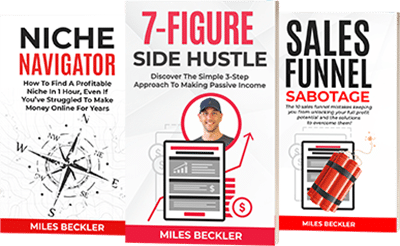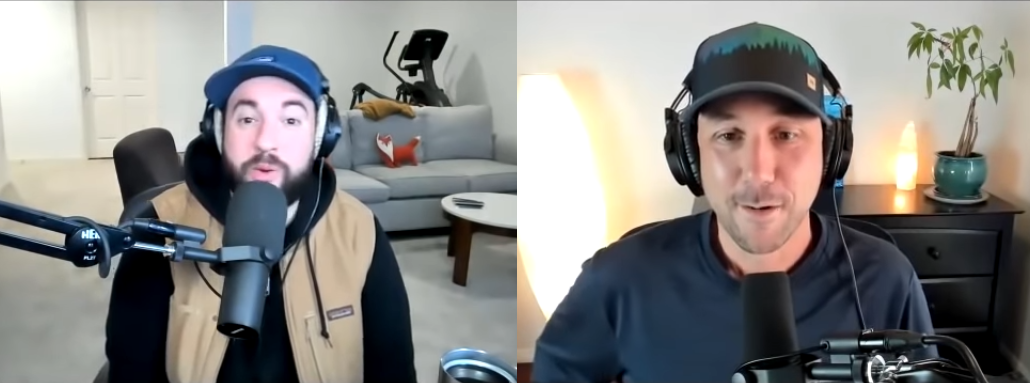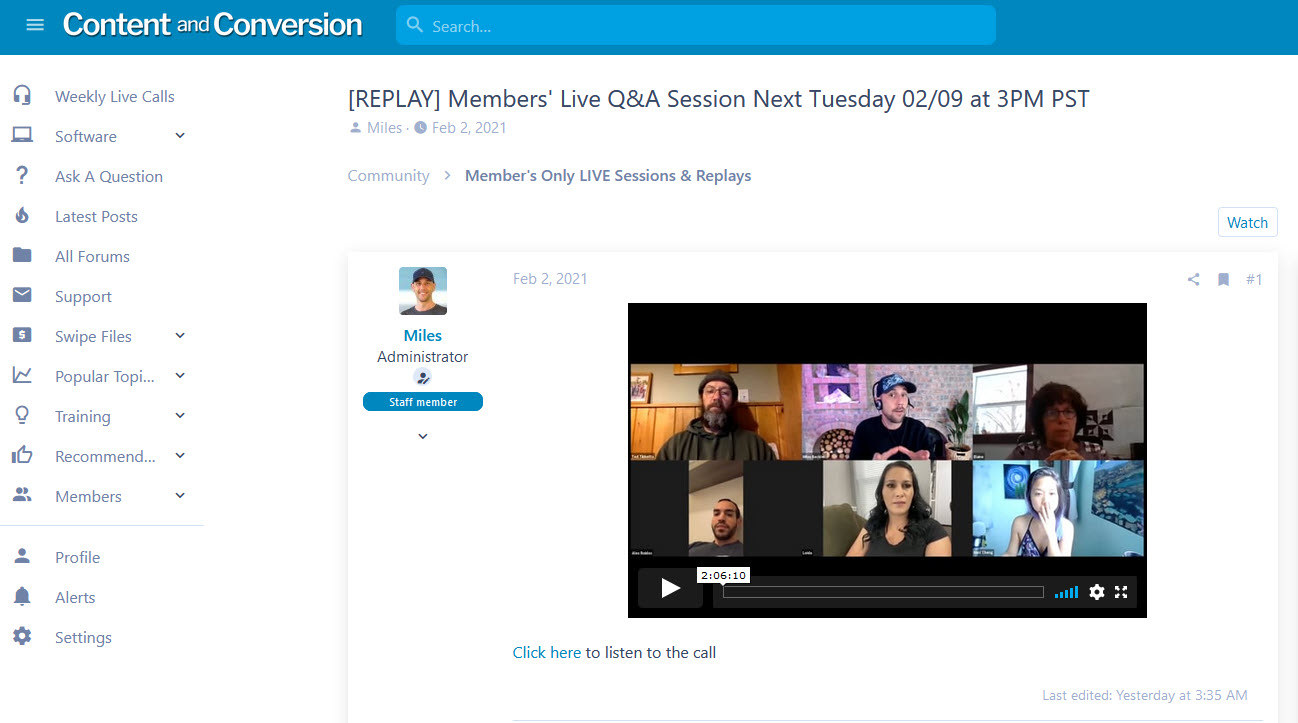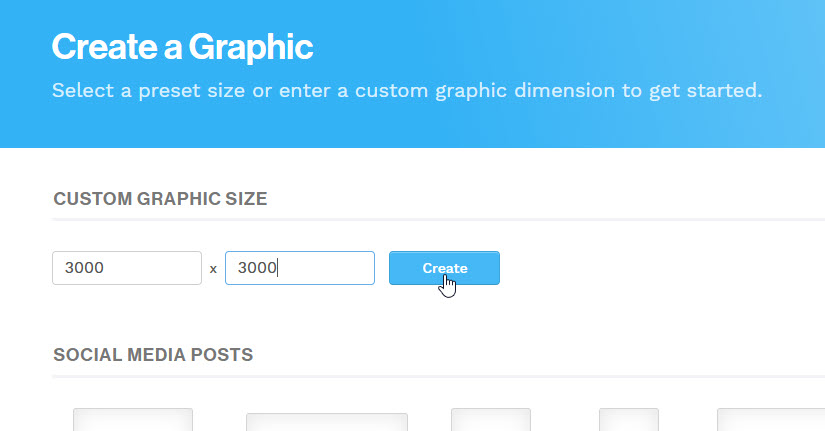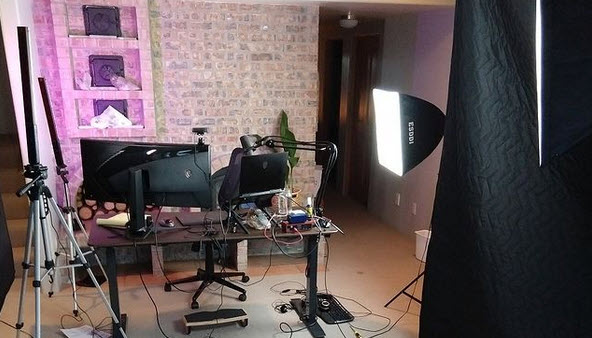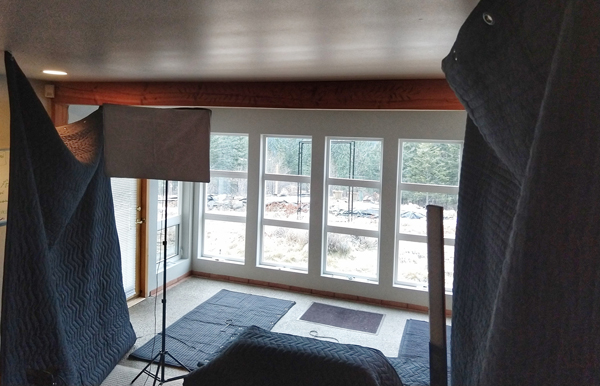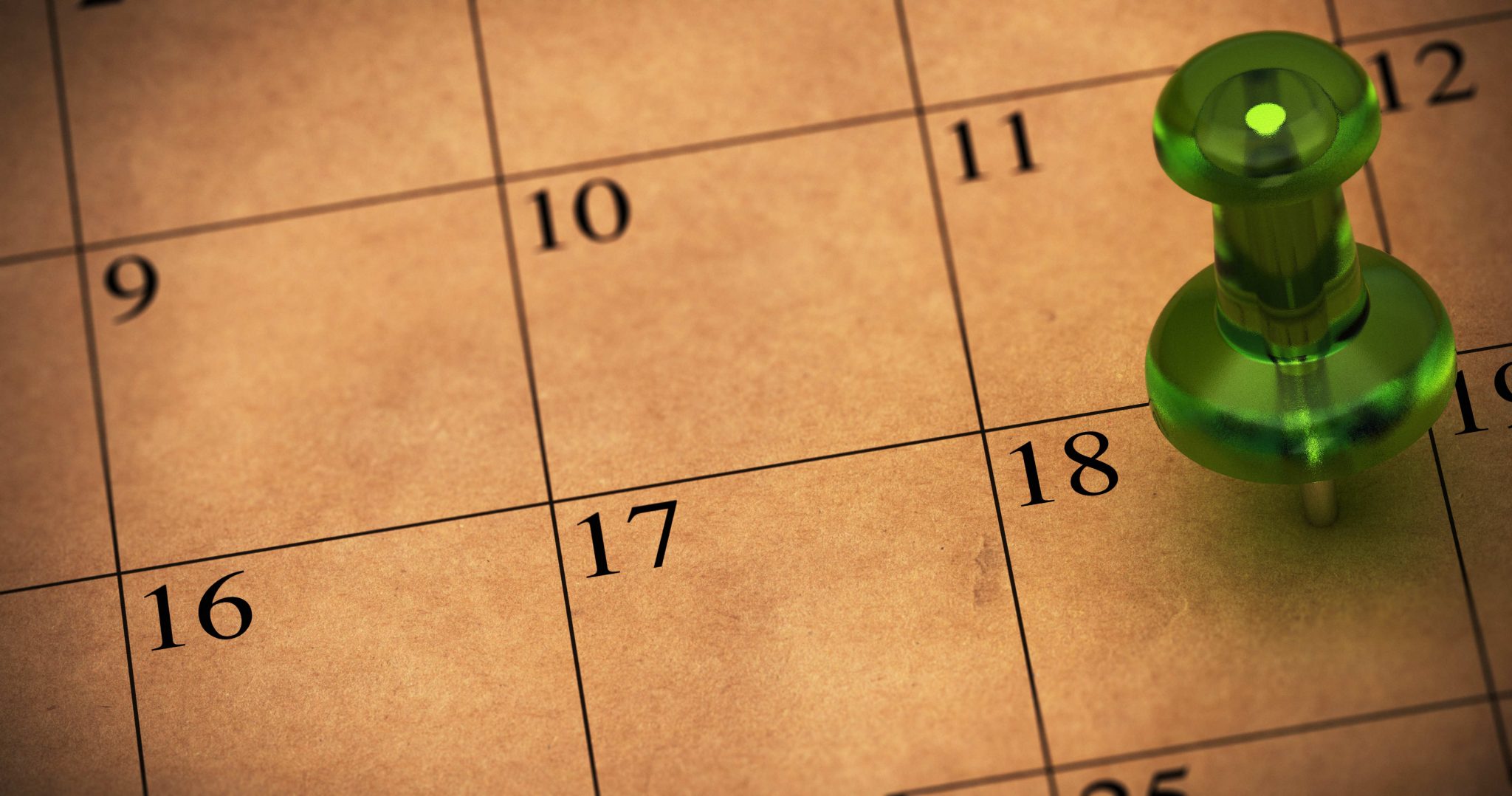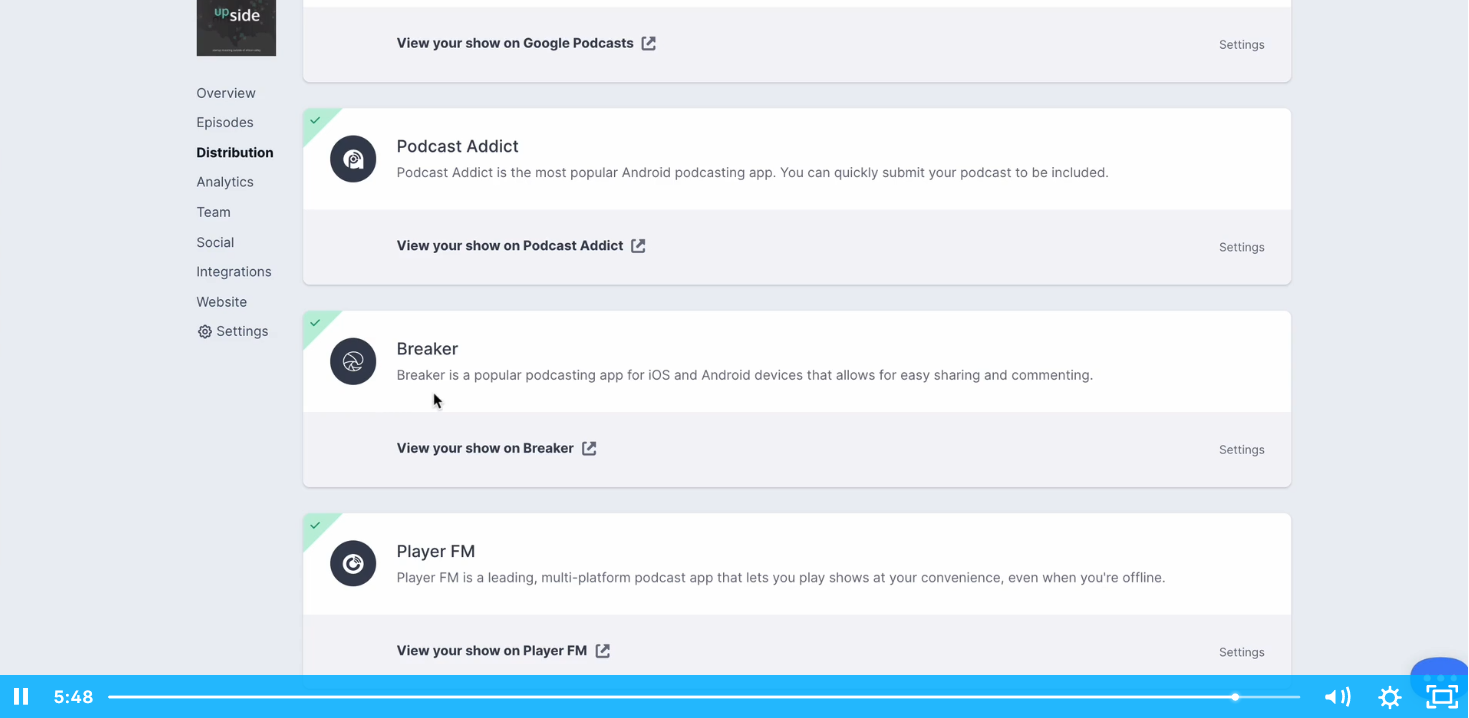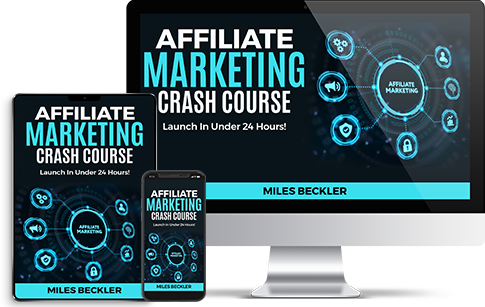So you're feeling the pull to start your podcast?
Great!
Now is the time to push through and get your show started, ASAP.
Why?
Because it's the year of the “Podcast First Approach.”
(More on that in a minute...)
For now, know that if you don't act quickly, you'll regret missing this opportunity as there is a virtual land grab going on and you can stake your claim while it's still early.
This complete guide condenses everything you need to know about how to start a podcast into seven easy steps:
- Refine Your Podcast Idea
- Your Monetization Strategy
- Make Your Podcast Stand Out
- Set up Your Studio
- Decide on Your Podcast Publishing Style
- Launch and Distribute Your Podcast
- Market Your Own Podcast
And remember:
It's a journey, and the first step, launching is always the steepest, the scariest, and the hardest.
This is precisely why I've written this post FOR YOU.
Let's dig in ...
Step 1: Refine Your Podcast Idea
Keep this Zig Ziglar quote front and center as you move through this process:
“You don't have to be great to start, but you have to start to be great.”
Way too many people get STUCK from the fear of failure and the need for perfectionism!
But not you.
Follow these three sub-steps, and you'll get it done FAST:
1.1. Understand Why You Are Starting a Podcast
Seriously, why are you going to spend your time and energy creating and launching your podcast?
It's tough and can be frustrating at time...
What's your leverage?
Doing it for your family? Your kids? Your clients? To get known as the expert you are?
This "WHY question" is the most basic of all questions because it’s the one that'll keep you going when things get tough.
There are many great reasons it makes sense to start a podcast:
- It can build credibility in your niche.
- You'll associate your name with leading experts.
- You'll be able to live anywhere you want.
- You can have more time to spend with your kids.
Write it down now!
"I'm going to start my podcast because it will _______" and post that near your laptop so you remind yourself every day why you are persevering!
Why Start a Podcast Right Now?
Let's get a little more specific about why today is the best day EVER to start.
It's because the “Podcast First Approach” is dominating the marketing world, right now!
Quick story about how this 'clicked' for me:
Every morning while I'm making coffee, I listen to about 20 minutes of audio... I really love great coffee and from grinding the beans to the French Press process and clean-up, it takes about 20 minutes.
So, I'm always listening to some sort of personal development content, usually an audiobook.
But lately, I have been listening to podcasts for inspiration to improve my interviewing skills...
And I came across an episode where Joe Rogan had Richard Rawlins on his show.
Richard was the mastermind and the talent behind the super successful Fast and Loud show on Discovery that had an 8-year run.
On this podcast, he announced 2 things:
- His TV show is ending.
- He's starting a podcast!
Now think about that for a minute ...
A “traditional” TV celebrity is leaving behind a huge career in the corporate media world to start a podcast!
Now, I personally know many niche business owners who are SUPER SUCCESFUL with a podcast-first approach...
But seeing main-stream celebrities shifting to Podcasting?
That's big.
And that's when it clicked.
Today, podcasting is in it's infancy and over the next 3-5 years, it'll CRUSH talk radio, mainstream news and more.
Tens (if not hundreds) of millions of listeners will be migrating to Podcasts in the coming years...
Will they find you?
What did I do next?
I went to school
I bought and devoured Jay Clouse’s "Podcast Like The Pros" course (which I highlu recommend).
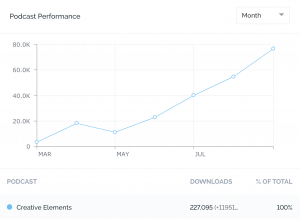
You can hear his story from that link above.
But, right now, check out his growth in the image to the right...
This is HUGE!
And the rate of growth is so much faster than what I experienced on YouTube or on my blog right now...
It proves that Podcasting is the place to be!
Are you seeing the pattern?
At this point, you obviously know that you need to create content in order to succeed online.
Whether you are personally sharing your expertise as I've done ...
Or whether you are interviewing experts to share their expertise ...
Creating more content is the name of the game!
And, for the right person, a podcast is the #1 channel of choice... especially if you also leverage videos of your podcasts and upload them to YouTube too!
It doesn't matter if you're just starting out and your podcast will be your first channel, or whether you already run a successful blog or YouTube channel ...
Remember the BIG POINT here (well, it’s kind of three points in one):
- Get started.
- Get great content out there.
- Grow your expertise, authority, and trust.
Here’s how to begin to make your dream come true!
1.2. Choose a Podcast Format
A podcast format will provide structure for your show beginning with episode one and then... commit to sticking to it!
You can choose from one of these eight formats:
- Monologue (a.k.a. a solocast)
- Interview
- Conversation with a co-host
- Panel
- Non-fictional storytelling
- Fictional storytelling
- Repurposed content
- Get creative and invent something new!
The first three formats are the most commonly used:
- The monologue, where just one person is talking.
- The interview, where one person is speaking to interesting guests.
- The co-host conversation, where two hosts are either interviewing others or having an entertaining chat between themselves.
Having a consistent structure is key ...
It’ll make your podcast feel more organized, which in turn will make it more accessible and easy to listen to!
And what’s more, it’ll help insanely with word-of-mouth marketing as your followers will be able to easily describe your show and convince their friends to join in.
Not sure which one to pick?
Take a look at this in-depth article to learn the pros and cons of each option!
Next up:
1.3. Focus On Your Best Listeners
Your success in podcasting lies within this three-part question:
What will you talk about, who will your target audience be, and why will they listen to you?
You need to pick something that:
- You’re passionate about and/or experienced in
- Enough people are interested in
There’s no point in spending months of your life making an obscure podcast that only interests you and a couple of friends!
A few ideas that come to mind include:
- Basketball (or any other sport) commentary and analysis
- Politics
- Being crafty
- Video games
- Entrepreneurship
Still struggling for an idea?
Or not feeling anywhere near like a “pro” in any topic?
Don’t despair!
Ask yourself a slightly different question to find the right show topic:
What subject have you been wanting to ask the pros about for years AND will likely never bore you?
Here are five topics that quickly sprung to mind for me:
- Money and financial freedom
- The secrets to unleashing your creative potential
- God and spirituality
- How to become an excellent parent
- How to develop an athlete’s mindset
There are literally millions of ideas for you to pick from …
So, find the one most suited to your interests and experience!
But before moving ahead with any single topic, make sure you can answer this last question:
Would 1,000 true fans tune in to your new podcast each and every week? And if yes, why?
If you can come up with an appealing answer, then your idea is golden —
Run with it!
If you are still struggling with the 'choose a niche' question, I've put together a free guide that covers my '5-minute niche finder method' to help you find your niche, in this post here.
Step 2: Your Monetization Strategy
Let's state the obvious:
You deserve to be compensated for your time and effort spent podcasting.
So let's get a basic strategy in place now while you are getting started!
Don't treat monetization as an afterthought. In other words, don’t say ...
“I'll think about it when my podcast is popular.”
But be careful:
This doesn't mean you'll be raking it in from the beginning.
It merely means that your podcast will be ready to monetize your influence as soon as you reach a significant number of listeners and downloads.
Think of it this way:
If you are developing a real estate project, you should know what the USE of the space is before breaking ground.
You don't have a tenant yet, you don't have a lease yet.
But you are still planning and engineering the cash flow potential from the blueprinting stages and beyond.
Here are the best podcast monetization strategies.
2.1. Advertising and Sponsorship Deals
The most common (and traditional) way to earn an income from your podcast is to find brands willing to invest in your show because they want to reach your audience.
Podcasts are booming, and so is podcast advertising — it’s expected to reach $500 million by the end of 2021!
That's an enormous pie to aim for ... but there's a catch, unfortunately:
You need to have many listeners and fans (think of a number in the thousands) before your podcast will appeal to investors!
But this doesn't mean you shouldn't be planning for future deals now ...
How?
As you plan and create a podcast, make sure you have an exact target audience in mind …
Then craft content perfectly suited for them.
Having a well-defined listener (a.k.a. a customer avatar) will make your channel far more attractive to sponsors once you have the audience size!
What can you do to monetize BEFORE you make it to tens of thousands of listeners and downloads?
Two major things:
- Create “transformational” information products
- Start affiliate marketing
Here are the details:
2.2. Create & Sell Coaching or Information Products
As a podcast host, you’re in the business of creating content that delivers incredible value to people’s lives ...
And they recognize that!
If people feel like you're helping them grow personally or professionally, they’ll not only like you; they'll also trust you as an expert in your field.
This puts you in an exceptional position to create and sell “transformational” information products to your audience.
When you help your avatar accomplish their goals on your podcast, these more in-depth products and services you create and sell are the logical next step.
You could …
- Write ebooks
- Teach seminars
- Offer webinars
- Create online courses
- And more
As you create episodes, pay attention to how they are connected and what “from and to” journey you are helping your listeners accomplish.
Soon, you will likely have enough ideas you can piece together to create and sell an information product.
Here’s another “faster” monetization tactic you should go all-in on, affiliate marketing.
2.3. Affiliate Marketing
Affiliate marketing is pretty simple, and it's rewarding when you do it well.
Here's a quick overview:
As you create your podcast episodes you will begin talking about books, products you use, courses you have gone through, etc.
Most of the time, these are items you have purchased and companies will pay an influencer (you) to refer them sales.
How?
When you talk about a tea that helps you wake up, go to amazon or wherever you purchased that tea and look for an affiliate program.
Often doing a “site:websitename.com affiliate program” in Google is the fastest way to discover these referral programs.
Look:
All you need to do is apply to become a partner in their affiliate program and once you are approved, you will receive an affiliate link.
An affiliate link is a unique to you URL that tracks when you send clicks to that company so you can get paid.
You simply place this affiliate link in your show notes, blog posts, etc and when your listeners click your link and make a purchase—you will then receive a percentage of that sale.
But remember:
ONLY recommend products and services you know and love: your reputation depends on it!
One sale won’t make you rich ...
But if every episode has affiliate links and as you grow your listenership, you’ll be on your way to steady recurring income!
You can leverage affiliate marketing in a very similar way to sponsorships and advertisements...
The beginning segment of your podcast can start with a promo segment that links users to a product you love and use through your affiliate link.
If they purchase, you earn income.
It is like a self sponsor approach that allows you to test different offers to your traffic without the headaches or outreach required from traditional sponsorship and advertising methods.
Now that we've covered the best monetization strategies...
It's time to go on to the next step.
Step 3: Branding Your Podcast
Here's an important question for you at this phase:
How will you make your new podcast stand out in the sea of hundreds of thousands of others?
In other words, what will be the listening experience of your podcast?
It's easy to get caught up in all of the fancy and expensive tech, but that's not required to get started.
You will find dozens of ways to improve your audio quality and the overall experience by going through the motions of creating and publishing your podcast week in and week out for months on end.
To get started however, it's important to get you into motion publishing as quickly as possible.
So ask yourself this one simple question:
“What’s the bare minimum I need to get started?”
For a podcast, the answer is simple:
- Your time and voice (or a friend’s — especially if they sound like Morgan Freeman)
- A name and an image
- Recording equipment (a.k.a. a good enough quality microphone for about $100)
- A podcast hosting provider ($0 - $10 per month)
And that’s it.
All in all it's possible to get started for $100-$200 if you don't have any tech you can leverage.
Let's run through the foundational components you need in order to get started
3.1. Name Your Podcast
It’s time to name your podcast.
Don’t spend ages here — tons of people end up wasting ridiculous amounts of time and effort on this step!
Why?
They think their podcast name will make or break their success.
Newsflash:
It WON'T.
It’s actually your content and skills that’ll impress podcast listeners and help you get into the popular podcast lists!
What should you do?
- Pick a sensible podcast name …
- That ties in with your chosen niche,
- And that’ll appeal to the people in your target audience.
It could be as simple as “StartUp Podcast” or as edgy as “Death, Sex & Money.”
The choice is yours, but make it quickly!
And then move on:
NOTE: You can always change your name in the future. You can always change the structure of your podcast in the future.
A great example of this is my friend Eric Tunreeson who runs Member Mouse and hosts the "Subscription Entrepeneuer" podcast.
He had me on as a guest for episode 163 which you can listen to, here.
Specifically I want to note what he said at 39 minutes in... Eric shares that:
...I mean, the podcast, we didn’t even originally plan on doing a podcast. If you even go back to listen to the first episode it’s clear because we haven’t gone back and changed it. But it’s basically, we’re going to ask a few people this same question and see what they say and it was me having a conversation with somebody. And somehow it evolved itself. And even the name of what we were doing changed in each episode of the first seven episodes. It was one thing and then it was another thing and then ultimately it came to Subscription Entrepreneur. But there was no initial plan to have it happen this way.
Which simply reinforces the big idea of this section:
The most important part is to get started, get in the motion and to begin publishing!
You will adapt, evolve, grow and improve over time!
3.2. Create Podcast Artwork
People are attracted by visuals.
There's no way around it.
Your podcast's cover art is going to be the very first thing people see when they find your podcast on one of their favorite apps.
You need to spend some time making it look incredible.
If you make a strong first impression, people will:
- Open up your profile,
- Read your podcast description
- More likely than not, tune in to an exciting episode ...
- And then they're hooked!
Keep these tips in mind as you design your podcast cover art:
- Keep it simple and legible.
- Use eye-catching colors, contrasts, and/or artwork.
You need to choose two colors, primarily.
One that will be the theme of your brand, and an accent color that contrasts. A different color that “pops” from your primary color.
Mine is blue for the primary color, with red as the contrasting color for my podcast artwork.
Once you define those colors, you need to create an image that is 3,000 X 3,000 pixels. Using a free design tool like Snappa is an easy way to create this image for free.
Just enter 3000 X 3000 in their custom graphic size and begin creating.
Then:
- Choose a background color for your image
- Add your show name as text (white or black typically)
- Maybe add a free icon
- Maybe accent with a couple of additional words
- Shadow your podcast’s name with your contrasting color
Then, save the image as a jpeg and you’re done.
If you want to outsource the design of your podcast artwork, you can do it for pretty cheap on Fiverr.
Need a little bit more inspiration on design?
Open your favorite podcasting app and look at all the top ranked podcasts in your niche and others.
Pay attention to the color, the style, the typography, etc.
Inspiration is there, waiting for you!
3.3. Optimize Your Podcast for SEO
Search Engine Optimization (SEO) is fundamental.
Why is this?
Because the vast majority of people use Google or YouTube to get answers to their most pressing questions and discover new information.
If you show up on search results, you'll gain an incredible number of new listeners!
Up until recently, it was really tough for podcasts to get good SEO results due to Google's algorithm and other technical factors that you don't need to know about.
But finally:
Google decided to give podcasts the space they deserve!
They're now showing up in Google search results pages under a special slider called “Podcasts.”
This is a massive opportunity for you to gain visibility, brand awareness, and ultimately traffic to your show!
How can you take advantage of it?
Easy:
Start by finding a low competition keyword and using suitable “keywords” for each of your podcast episodes.
You'll want to target relevant phrases that have search volume and low competition.
Once you have them, make sure you're covering these topics people are searching in your podcast episode.
But don’t just leave it at that:
Give each of your episodes a home on your blog or website.
How?
- Transcribe each episode with Descript.
- Write up a short summary and show notes.
- Create an individual blog post for each podcast episode.
- Add the summary, the show notes, the full transcription, and of course, the podcast recording (via a plugin as it'll be hosted elsewhere — you'll learn about hosting further down).
All this extra text is basically Google's love language.
It will make search engines' lives even easier when it comes to matching your great content with a user’s search request!
(If you don't have a blog yet, build yourself one using this complete guide to starting a blog.)
3.4. Choose/Produce Music for Your Podcast
A unique podcast intro is a fantastic way to make your show stand out.
By adding a unique sound to your podcast, you'll help build audial recognition with your listeners.
As soon as your podcast listeners hear your music or jingle, they’ll know to pay close attention because your excellent content is coming up!
There are tons of options available for finding podcast music …
But https://freesound.org/ is where you can get royalty free audio clips that is perfect for podcasts intros and outros.
For a premium (and a lot more efficiency) there is the vast paid catalog of stock music and sound on Storyblocks.
And you can edit your intro for free with either Audacity or Garageband.
Or …
… you can always hire a creator on Upwork or Fiverr if you want to create something unique.
You will also want to add your voice over the tunes, here’s how to begin to record your voice, affordably.
Step 4: Set up Your Studio
Podcasts rely on one thing above everything else:
Audio.
Listeners won’t give you any time of day if your sound quality is low.
It’s a super frustrating experience, and people will bounce without finishing your first episode, likely never to return again.
This means you need to become a bit of an audio geek and sort your setup today, on Day 0 …
To start out, simply remember, “Minimum Viable Podcasts” (MVP)!
Focus on getting yourself the basic quality podcast equipment at the lowest price possible and as quickly as you can.
Or, if you want to go premium from the start, you can check out my studio setup in this post here.
This is how you can do it today, affordably!
4.1. Choose Your Recording Gear
You won't need much to record a podcast ... especially if you follow the MVP principle.
Only three things:
- A smartphone or computer
- A microphone
- Audio recording software
And since 99.9% of you already have a smartphone or a computer, it's really only two things you need.
Not bad at all.
First up, microphones.
Any one of these four options will do the trick:
- The HyperQuest QuadCast USB microphone is the best value on a professional level microphone that doesn't require thousands of dollars to set up like most pro podcast set ups. For under $150 this microphone has its own stand, plugs directly into USB and has an extremely rich sound your listeners will love.
- A Dynamic USB microphone in the $70-$80 range, like this Audio Technica. This option is best if you are recording with guests or a co-host in the same room.
- A simple USB headset mic, like the Cooler Master MH-752, costs around $90 and delivers excellent audio quality.
- The iRig Mic Lav or the Shure MV88 for iOS if you’re planning on recording with your cell phone or tablet.
Finally, you’ll need some audio recording software.
The good news is you have three FREE options to pick from:
- Garageband if you have Apple tech.
- If you’re on Windows or Linux, Audacity.
- A great Android recorder is Hi-Q MP3 (costs four bucks).
- Zoom.us (a conference call tool with recording capabilities).
And you’re all set in under 10 minutes!
Next:
4.2. Acoustically Treat Your Room
Odds are that you’ll be recording and editing in your home or office …
Obviously, these locations aren’t exactly suited for setting up a professional recording studio.
Your show might suffer from reflections, echoes, and reverb, meaning you'll need to spend hours editing your podcast and audio files.
Not ideal.
But don’t worry, you can fix this quite quickly!
The first consideration is where you record. for a podcast you don't have to be sitting in the middle of the room and you don't have to deal with the echoes or reverbs from being in a large space...
Especially if you are recording video!
I have several friends who have taken to recording inside of their closets or walk in closets with all of their clothes hanging around them.
The clothes all act as acoustical treatments that absorb the sound waves so your microphone doesn't pick up the reflections of your voice off of windows, walls, cement floors, flat ceilings, etc.
Certainly this may not be ideal but it is effective and free.
Personally, I really like hanging these sound blankets here from my ceiling within the room I'm in, to absorb the soundwaves from bouncing off of the walls and windows.
In the picture below, notice the grommet holes in the top of the blanket (on the right?)
I simply screwed these ceiling hooks into my ceiling and the blankets hang down from them.
You may notice that I have a few of the sound blankets on the cement flooring section...
Now I could have purchased a jag rug and placed it down on the floor, but I just happened to have some extra sound blankets.
I have also covered a box with the sound blankets in order to create yet another way for these sound blankets to stop the soundwaves from bouncing all over the walls in my office.
This allows me to create a better sound in my home office and allows me to record from my desk.
Since I often record video in addition to audio, this suits my needs better.
Now, full disclosure.
I know my 'closet' and 'sound blankets everywhere' approaches are ghetto... lol.
Personally, I don't care because it gets the job done and my audio sounds great.
But for others, the visual aesthetic is important...
Just know it costs more.
If set design is important... Or if you want to record in a bedroom/office combo, you may want to consider professional grade audio acoustical treatments.
They can get expensive, but the best value audio panels I've found are from this company in Florida and they are all made in the USA!
They have a very handy room calculator that will assist you in figuring out how many acoustical panels you need to clean up the sound in any size room your recording from.
At this point you've got your microphone and you've got your recording area dialed in...
You are now able to record and it's time to talk about post production...
But first, a quick warning/reminder.
postproduction can never fix issues from a poor quality microphone or echoes recorded from a room filled with reverberation.
A good microphone and quality sound treatments are required to capture a great sound.
There is no replacement or post production fix if you ignore the above two steps!
Okay, let's move forward.
4.3. Understand Sound Mixing Basics
Once you've finished recording a new episode for your show, you can choose from one of two options to really enhance your podcast’s sound quality.
One:
Learn about and master the most important sound recording and mixing basics.
This won’t be easy, and you’ll need to dedicate quite a bit of time and effort if you aren’t already an audio expert.
It requires a few steps that should be taken in this order:
- Continue to improve and learn microphone technique. (Work out how close you need to be to your mic and maintain that distance.)
- After recording, remove background noise from your track.
- Then use EQ to improve each voice in your podcast. (Because everyone’s voice is different, each voice will likely need a different EQ setting.)
- Use a compressor to level the different audio sections of your track
- If necessary, increase the gain of your track to hit around -6dbs consistently
Audacity and Garageband are free tools that will help you to accomplish these edits.
Two:
Pick the easy route.
(I highly recommend this route … it is what I do.)
It’ll stop you from getting intimidated by tech and giving up on your dream!
You can use super user-friendly (but paid) audio editing tools like alitu.com (the best) and auphonic.com to get the job done quickly and effortlessly.
Additionally, Upwork, Fiverr, and even OnlineJobs.ph (the most affordable) are great options to hire freelancers for an ongoing gig to edit and produce your podcast recordings.
This will free you up to spend your precious time focusing on what matters most — content for your show!
On to:
Step 5: Decide on Your Podcast Publishing Style
Here comes the fun part you've been waiting for:
Recording your podcast!
But mastering content creation isn't all fun and games ...
Creating a consistent flow of new episodes takes a lot of hard work, organization, and dedication.
You'll need a framework to guide you in the beginning.
So, here you go!
Follow these steps and master consistent recording:
5.1. Understand the Podcast Production Process
Be prepared ...
Recording, editing, and submitting a podcast is difficult.
But having a set approach to production really helps!
So what's the high-level process you should be following week in and week out?
It can be broken down into three major phases:
- Pre-production
- Production
- Post-production
Pre-production consists of everything you need to finish before you record.
It will include things like ...
- Thinking about storytelling and structure
- Finding and booking guests
- Prepping your notes
- Writing questions
The production phase is made up of recording, editing, and mixing a podcast episode.
Finally, you have post-production, where you …
- Finalize your MP3 audio file
- Add ID3 tags
- Add your podcast cover art to your mp3
- Upload it to your syndication platform
Post-production also includes promoting your episodes to get as many listeners as possible (discussed in the marketing section).
Finalizing your MP3 means exporting your final audio file with a quality of around 98kbps. This reduces the file size of your audio, saving you additional fees and space with your podcast hosting company, while keeping the quality at a pro level.
ID3 tags, cover art, your artist name and more are added to an MP3 file using https://www.mp3tag.de.
You can learn how to use mp3tag to add tags, cover art, and other important file settings in this podcast publishing guide.
Sounds like a lot, right?
It is ...
The question is, how can you make your podcasting life easier?
Two ways:
- Set yourself a strict publishing routine
- Use project management tools
Here are the details:
5.2. Decide on a Publishing Schedule
You absolutely need to build a solid publishing routine …
It’s as vital as getting a good night’s sleep each and every day (well, night).
Consistent publishing will make or break your podcast.
It helps you plan your days and your workload, so you don’t drown in your tasks.
It also gives your fans a fixed time for when to expect a new episode.
People love dependability … it’s closely linked to trust!
Your listeners won’t be different!
So, when exactly should you ship your new episodes?
The good news is that it doesn’t really matter…
Select a day and time that works best for YOU.
It could be every Tuesday at 9am, every Thursday at 2pm, or twice a week on Mondays and Fridays at 4pm.
The choice is yours.
Just. Be. Consistent.
Note:
After a few months you may want to try a different day or time. This was the case for me, Fridays ended up being a bad idea for my crowd.
You may need to adapt your publishing routine at some point but you can typically only learn this with data from your unique audience.
5.3. Stay Organized!
Managing your workload (or your entire team’s workload) can be a real challenge…
Especially when you’re aiming to release one or two podcasts each and every week, and you need to complete all the phases of the production process pronto!
Luckily, technology is here to help.
- AirTable has content creation templates to revolutionize the way you organize your workflow, but it’s not free.
- A very generous and capable free plan can be had with Asana
- The Workflowy app is what I use to drop and save all of my future episode ideas.
Then, once a task gets put into motion, it either goes on my old-school whiteboard or into one of the above project tools.
You’ll likely need to try a few before you find which one is best for you and your podcast partners.
5.4. Create a Script or Outline for Your Episodes
An outline or a script for your episode will help you to stay on track when recording and there are three main ways to accomplish a script for your podcast:
1. Word for word
Literally, write down every single word you’ll say in the episode; you won’t miss a single detail this way!
2. Detailed
Create a script that includes all the key information you want to say, but don’t worry about writing full paragraphs or exact word-for-word sentences.
3. Bullet points
Pull together a simple and flexible outline, with the main discussion topics listed as section headers. Each header should then have a couple of bullets underneath that mention the “can’t miss” talking points. Everything else is left up to the host!
Which option should you choose?
It depends on two things.
1. Your podcast’s format
Think back to section 1.2. Choose a Podcast Format.
You picked a format (i.e., monologue, interview, conversation with a co-host) for your show and committed to being consistent.
What you picked influences the best way to script.
Here a few examples:
A monologue podcast benefits from a word-for-word script because you’re recording alone, and you won’t have natural pauses to stop, think, and regroup.
On the other hand, a conversational podcast is far more suited to a bullet-point script because you and your co-host have strong synergy and can improvise together. This will sound far more natural and engaging to your listeners.
An interview podcast sits somewhere in between:
You have a guest live with you, but you don’t know them as well, and you have a fixed list of questions to cover—so a detailed script is a great choice.
2. You
Everybody's different, so which style will work for you is ultimately up to you …
Your personal preferences are more important than general guidelines!
It's a good idea to experiment with various script types and find the best scripting method through practice.
Script ready?
Now add this:
Storytelling!
Storytelling is the absolute key to injecting emotion into your episodes.
If you add a captivating story to your podcast, you’ll be able to transform basic information into something far more valuable—a tool for capturing new listeners and changing their behavior!
But be warned:
Storytelling is hard …
And it’ll take patience to really master this art form.
How can you learn?
Pixar’s free storytelling course “Pixar in a Box” will help you to learn from some of the world’s very best storytellers—people who have made the world dream with their movies!
Second, practice, practice, practice as much as you can.
Your efforts will be rewarded over time by more engaged (and more loyal) listeners!
Now let’s take a step back and make sure you avoid this rookie mistake if you choose to do interviews.
5.5. Prepare for Interviews With Research and Planning
Benjamin Franklin once said:
“By failing to prepare, you are preparing to fail.”
If you don't prep for each interview properly, your episode is at massive risk.
ALWAYS set some time aside and do your homework.
This a simple process that works:
- Do background research on your guest. Check their social media profiles, their website or blog, all their recent work, and any other interviews they’ve given.
- Decide what it is about a particular guest that appeals most to YOUR audience and focus on these topics.
- Write your interview questions in advance—make sure they’re open-ended, probing, and intriguing! Avoid yes/no and leading questions!
- Share your question outline with your guest in advance (aim for at least a week) and brief them about your podcast and your goals for the specific episode.
Now all that's left is for you to enjoy your well-prepped interview.
Be honest, flexible, and friendly!
And, drum roll, please ...
You’re ready to record your podcast episode and then edit away with the tools you’ve discovered today!
Don’t hesitate—go for it!
Then move on to:
Step 6: Launch and Distribute
Once your audio files are finished, you need to get them online for the world to hear.
Warning:
Never use your website to host and distribute your podcast.
You’ll overwhelm your server and either cause your site to crash or become excruciatingly slow—a recipe for disaster and many, many headaches!
What should you do instead?
Pick a podcast hosting provider that’ll take care of your uploading needs!
Your first option is inexpensive (and it’s the one I personally use for my audio files) ... Libsyn.
This is a simple, relatively “bland” platform, BUT it gets the job done with bulletproof reliability.
And it’s affordable:
It starts at $5 a month, and you only pay for what you upload (regardless of how many people download it and how popular it gets).
You can use the code “Miles” when you sign up for Libsyn and receive the rest of this month and the next month for free.
Another reliable podcast hosting option, and the one Jay Clouse uses and highly recommends, is Transistor.
It can be slightly more expensive than Libsyn. However, it’s still an affordable platform, and it comes with two tremendous added benefits:
- One-click distribution to an exhaustive list of major podcast directories (like Apple Podcasts)
- Phenomenal analytics
Just pick one, sign up, and upload your podcast episodes!
Okay, where to next after all your content is online?
Publish your podcast on each of the major podcast directories:
- iTunes/Apple Podcasts
- Spotify
- Podcast Addict
- Breaker
- Google Podcasts
This way, potential listeners can easily find you!
Make sure to start with iTunes (as it is the biggest podcast directory) and then work through the other platforms.
Now:
Step 7: Marketing Your Podcast
After you publish your podcast, it's important to get to work marketing it so you can grow your listenership.
Now, it's not required to do all of these marketing strategies for your podcast, but you do need to create a marketing strategy and put in time and effort to get the word out about your new show.
Personally, I prefer the strategies that allow you to repurpose your podcast content into other formats because it helps you get more value and leverage with the content you created for your podcast already.
Here are the best DIY ways to market your podcast:
7.1. Publish your show notes, transcriptions & episodes to your blog.
Whether you are talking about popular topics on your podcast or interviewing popular guests, there's an opportunity to get help from Google marketing your podcast.
Google's algorithm is based on reading the text you publish to your WordPress blog. If you don't have a blog set up yet, here's my free tutorial that will teach you how to start your blog.
There are a few ways you can leverage your podcast to grow your blog.
- Publish transcriptions from your podcasts to your blog, like this: https://shontavia.com/transcript34/
- Create a blog category for your podcast and publish every episode with show notes, like this: http://www.youtubecreatorshub.com/111-a-video-a-day-for-90-days-with-miles-beckler/
- Create blog posts that are optimized to rank for your guest's name, like this: https://www.gotchseo.com/miles-beckler/
7.2. Get Your Episodes on YouTube
Since you’ve already set up your podcast for success on the world’s largest search engine, Google, you can now worry about the next biggest:
YouTube.
You have 2 options to making YouTube videos from your podcast episodes.
First:
Capture a video recording while creating the audio of your podcast with at least a cell phone. Then, simply upload that video to YouTube and let your fans see your beautiful face.
Second:
If you don't want to go that route, at least, create an attractive image (based on your podcast’s cover art) and use that as a fixed image for your audio’s “podcast video.”
Never forget to:
- Use a relevant keyword in your video’s filename
- Create a compelling title and thumbnail for your video
- Add a solid YouTube description that includes your affiliate links and links to other videos.
- You can learn more about YouTube optimization in this video
7.3. AskYour Guests To Share Their Episode With Their Followers
Now that you have your podcast available on three channels—your blog, YouTube, and podcast directories—it’s time to call in some outside help.
Cue your podcast guests.
They’ll be more than willing to help out.
After all, they’ll be promoting themselves, and you’re just the by-product of their success.
So, make it easy on your guests by providing (and testing) direct links to the episode so they can leverage their existing networks easily to get traffic to YOUR channel!
Then:
7.4. Share on Social Media
The next thing you can do is to share your podcast episodes all over your social media channels.
Fortunately, it’ll only take you a couple of minutes.
Get friends and family to hit those “like” and “share” buttons to keep spreading the word!
You can also try sharing your podcasts in relevant places, such as ...
- Facebook groups
- Quora questions
- Pinterest posts
If you choose the Facebook groups/Quora route, NEVER just say “you can learn my answer in this podcast episode.”
Always provide useful and helpful answers, solutions, and inspiration ending with an “If you want to go deeper…”
Dropping links that are only about you is a fast way to earn zero engagement on social.
So, now what's left for you to do?
Keep Improving And Leveling Up!
Once you're up and rolling, you need to focus on continuous improvement.
Each new episode should be better than the last one until you're a certified pro!
Follow this straightforward process:
- Publish an episode.
- Track analytics via your hosting service.
- Review what works and what doesn’t.
- Optimize, optimize, optimize.
- Then rinse and repeat … ad infinitum!
And, if you haven't signed up for Jay’s incredible course yet, do it now!
I took it, and I can personally vouch for it. There's no better online resource for taking your podcasting skills to the next level!
All it takes is 5 hours ... that's lightning-fast learning!
That's all, folks ...
You've made it to the end.
If you've followed along and completed each step as you've been reading, then you've upped your podcasting skills like mad, and your podcasts are on the path to success.
Congratulations!
If you haven't started yet, NOW is the time ...
If you want even more guidance in the process, be sure to check out Jay's "Podcast Like The Pros" course here.

